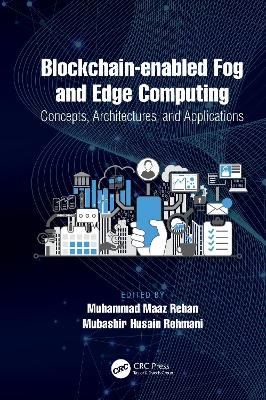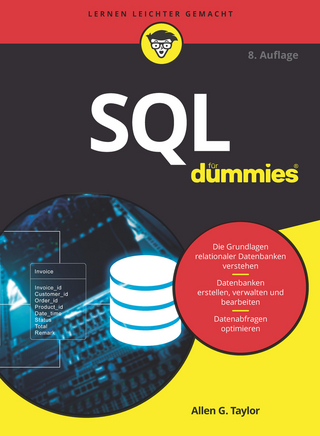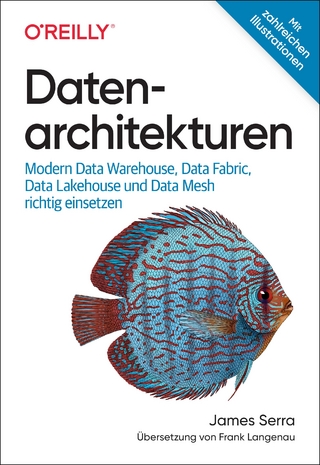
Blockchain-enabled Fog and Edge Computing: Concepts, Architectures and Applications
CRC Press (Verlag)
978-0-367-50744-2 (ISBN)
This comprehensive book unveils the working relationship of blockchain and the fog/edge computing. The contents of the book have been designed in such a way that the reader will not only understand blockchain and fog/edge computing but will also understand their co-existence and their collaborative power to solve a range of versatile problems.
The first part of the book covers fundamental concepts and the applications of blockchain-enabled fog and edge computing. These include: Internet of Things, Tactile Internet, Smart City; and E-challan in the Internet of Vehicles. The second part of the book covers security and privacy related issues of blockchain-enabled fog and edge computing. These include, hardware primitive based Physical Unclonable Functions; Secure Management Systems; security of Edge and Cloud in the presence of blockchain; secure storage in fog using blockchain; and using differential privacy for edge-based Smart Grid over blockchain.
This book is written for students, computer scientists, researchers and developers, who wish to work in the domain of blockchain and fog/edge computing. One of the unique features of this book is highlighting the issues, challenges, and future research directions associated with Blockchain-enabled fog and edge computing paradigm. We hope the readers will consider this book a valuable addition in the domain of Blockchain and fog/edge computing.
Muhammad Maaz Rehan (M’16, SM’17) is an Assistant Professor in COMSATS University Islamabad, Wah Campus, Pakistan under the Tenure Track System and have been attached with academia and industry from the last 15 years. He is leading the Telecom and Networks (TelNet) Research Group (https://sites.google.com/view/telnet-rg/) at COMSATS University. He obtained a PhD degree from Universiti Teknologi PETRONAS (UTP), Malaysia in 2016 with two Bronze medals for his PhD work. He is an Editor of IEEE Softwarization Newsletter and Associate Editor of IEEE Access & Springer Human-centric Computing and Information Sciences journals. Dr. Maaz is twice a fellow of Internet Society (ISOC) for the Internet Engineering Task Force (IETF). He is lead author of the book, “Blockchain-enabled Fog and Edge Computing: Concepts, Architectures and Applications", published by Taylor & Francis group, CRC Press, USA. He has supervised 13 Masters students in COMSATS and 2 PhD students abroad. The research areas of Dr. Maaz include: Blockchain, Internet of Things and Vehicles, ICN, Machine Learning for Networking and Fog/Edge Computing. Mubashir Husain Rehmani (M’14-SM’15) received the B.Eng. degree in computer systems engineering from Mehran University of Engineering and Technology, Jamshoro, Pakistan, in 2004, the M.S. degree from the University of Paris XI, Paris, France, in 2008, and the Ph.D. degree from the University Pierre and Marie Curie, Paris, in 2011. He is currently working as Assistant Lecturer in the Department of Computer Science, Cork Institute of Technology, Ireland. Prior to this, he worked as Post Doctoral Researcher at the Telecommunications Software and Systems Group (TSSG), Waterford Institute of Technology (WIT), Waterford, Ireland. He also served for five years as an Assistant Professor at COMSATS Institute of Information Technology, Wah Cantt., Pakistan. He is currently an Area Editor of the IEEE Communications Surveys and Tutorials. He served for three years (from 2015 to 2017) as an Associate Editor of the IEEE Communications Surveys and Tutorials. He is also serving as Column Editor for Book Reviews in IEEE Communications Magazine. Currently, he serves as Associate Editor of IEEE Communications Magazine, Elsevier Journal of Network and Computer Applications (JNCA), and the Journal of Communications and Networks (JCN). He is also serving as a Guest Editor of Elsevier Ad Hoc Networks journal, Elsevier Future Generation Computer Systems journal, the IEEE Transactions on Industrial Informatics, and Elsevier Pervasive and Mobile Computing journal. He has authored/ edited two books published by IGI Global, USA, one book published by CRC Press, USA, and one book with Wiley, U.K. He received “Best Researcher of the Year 2015 of COMSATS Wah” award in 2015. He received the certificate of appreciation, “Exemplary Editor of the IEEE Communications Surveys and Tutorials for the year 2015” from the IEEE Communications Society. He received Best Paper Award from IEEE ComSoc Technical Committee on Communications Systems Integration and Modeling (CSIM), in IEEE ICC 2017. He consecutively received research productivity award in 2016-17 and also ranked # 1 in all Engineering disciplines from Pakistan Council for Science and Technology (PCST), Government of Pakistan. He received Best Paper Award in 2017 from Higher Education Commission (HEC), Government of Pakistan. He is the recipient of Best Paper Award in 2018 from Elsevier Journal of Network and Computer Applications.
Part I: Fundamental Concepts and Applications of Blockchain-enabled Fog and Edge Computing
Chapter I. From Blockchain Internet of Things (B-IoT) Towards Decentralized Tactile Internet (Abdeljalil Beniiche, Amin Ebrahimzadeh, and Martin Maier)
1.1 Introduction
1.2 Blockchain Technologies
1.3 Blockchain Iot And Edge Computing
1.4 The IEEE P1918.1 Tactile Internet
1.5 Decentralizing The Tactile Internet
1.6 Blockchain, AI, And Human Intelligence: The Path Forward
1.7 Open Challenges And Future Work
Chapter II. Blockchain Concepts, Architectures and Smart City Applications in Fog and Edge Computing Environments (Daniel Minoli, and Benedict Occhiogrosso)
2.1 Introduction And Overview
2.2 Background And Motivations
2.3 Iot Architectures With Emphasis On The Edge Structures
2.4 5G IoT Communication Technologies
2.5 Smart City Concepts and Common Smart City Applications
2.6 Summary Of Applicable Blockchain Concepts
2.7 Survey Of Smart City Iot Applications That Are And/Or Will Benefit From Blockchains
2.8 Future Research Areas
Chapter III. A Blockchain-enabled Edge Supported E-Challan Mechanism for Content-Centric Internet of Vehicles (Ali Nawaz Abbasi, Tashjia Anfal, and Muhammad Maaz Rehan)
3.1 Introduction
3.2 Literature Survey
3.3 Research Motivation and Problem Statement
3.4 Proposed Mechanism
3.5 Results and Discussion
3.6 Conclusion
Part II: Security and Privacy Issues in Blockchain-enabled Fog and Edge Computing
Chapter IV. Hardware Primitive based Blockchain for IoT in Fog and Edge Computing (Uzair Javaid, Muhammad Naveed Aman, and Biplab Sikdar)
4.1 Introduction
4.2 PUF Based Blockchain Protocols for IoT In Fog And Edge Computing
4.3 Conclusion
Chapter V. On Blockchain and its Complementarity with Fog Computing to Secure Management Systems (Chaima Khalfaoui, Samiha Ayed, and Moez Esseghir)
5.1 Introduction
5.2 Internet Of Things Context
5.3 Fog Computing
5.4 Blockchains
5.5 Blockchain And Fogs Complementarity
5.6 Proposition
5.7 Conclusion
Chapter VI. Security and Privacy Issues of Blockchain-enabled Fog and Edge Computing (Imane Ameli, Nabil Benamar, and Abdlhakim Senhaji Hafid)
6.1 Introduction
6.2 Cloud-To-Thing Continuum by means of Fog and Edge Computing
6.3 Blockchain
6.4 Blockchain & Fog/Edge Computing: A possible cooperation
6.5 Future Direction
6.6 Conclusions
Chapter VII Scaling Edge Computing Security with Blockchain Technologies (Pau Marcer, Xavier Masip, Eva Marin, and Alejandro Jurnet)
7.1 Edge Security and Challenges
7.2 Blockchain in the security arena
7.3 Blockchain architecture
7.4 Blockchain services in edge computing
7.5 Blockchain vs cloud solutions applied to edge scenarios
Chapter VIII Blockchain based Solutions for Achieving Secure Storage in Fog Computing (Ouns Bouachir, Rima Grati, Moayad Aloqaily, and Adel Ben Mnaouer)
8.1 Introduction
8.2 Background
8.3 Emerging Issues And Challenges
8.4 BC For Edge And Fog
8.5 Security In BC Based Fog Computing Systems: Solutions
8.6 Conclusion
Chapter IX. Differential Privacy for Edge Computing-based Smart Grid Operating over Blockchain (Muneeb Ul Hassan, Mubashir Husain Rehmani, and Jinjun Chen)
9.1 Introduction
9.2 Preliminaries Of Private Smart Grid Edge Computing Over Blockchain
9.3 Literature Review
9.4 Differentially Private Rer Monitoring For Edge Computing Based Smart Grid Operating Over Blockchain
9.5 Performance Evaluation
9.6 Challenges and Future Research Directions
9.7 Conclusion
| Erscheinungsdatum | 05.04.2022 |
|---|---|
| Zusatzinfo | 21 Tables, black and white |
| Verlagsort | London |
| Sprache | englisch |
| Maße | 156 x 234 mm |
| Gewicht | 458 g |
| Themenwelt | Mathematik / Informatik ► Informatik ► Datenbanken |
| Mathematik / Informatik ► Informatik ► Netzwerke | |
| Technik ► Nachrichtentechnik | |
| ISBN-10 | 0-367-50744-7 / 0367507447 |
| ISBN-13 | 978-0-367-50744-2 / 9780367507442 |
| Zustand | Neuware |
| Informationen gemäß Produktsicherheitsverordnung (GPSR) | |
| Haben Sie eine Frage zum Produkt? |
aus dem Bereich


